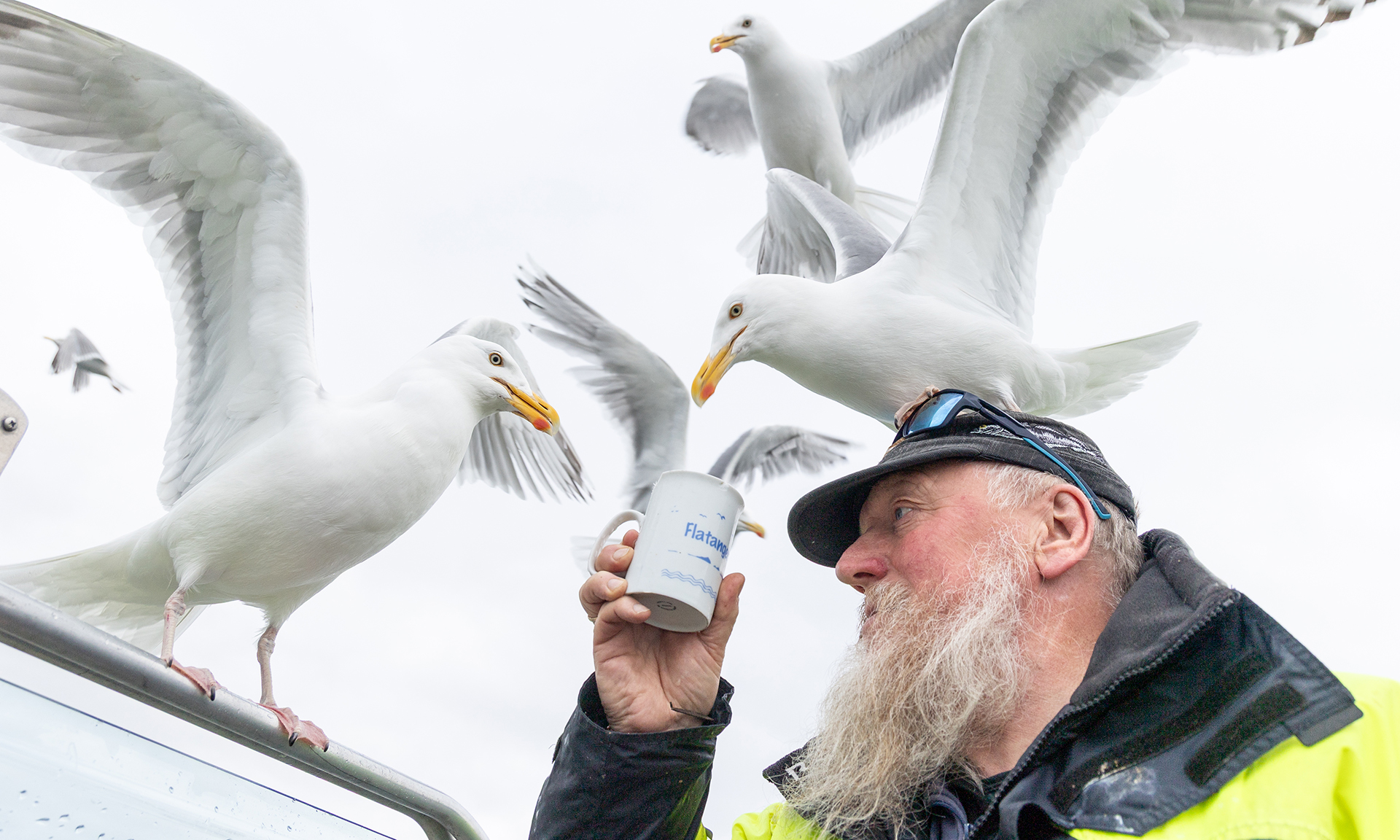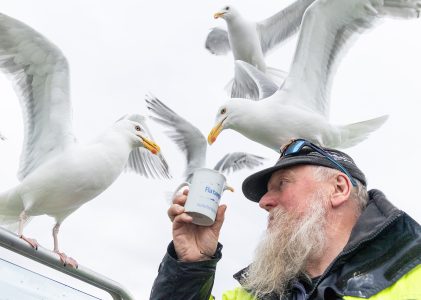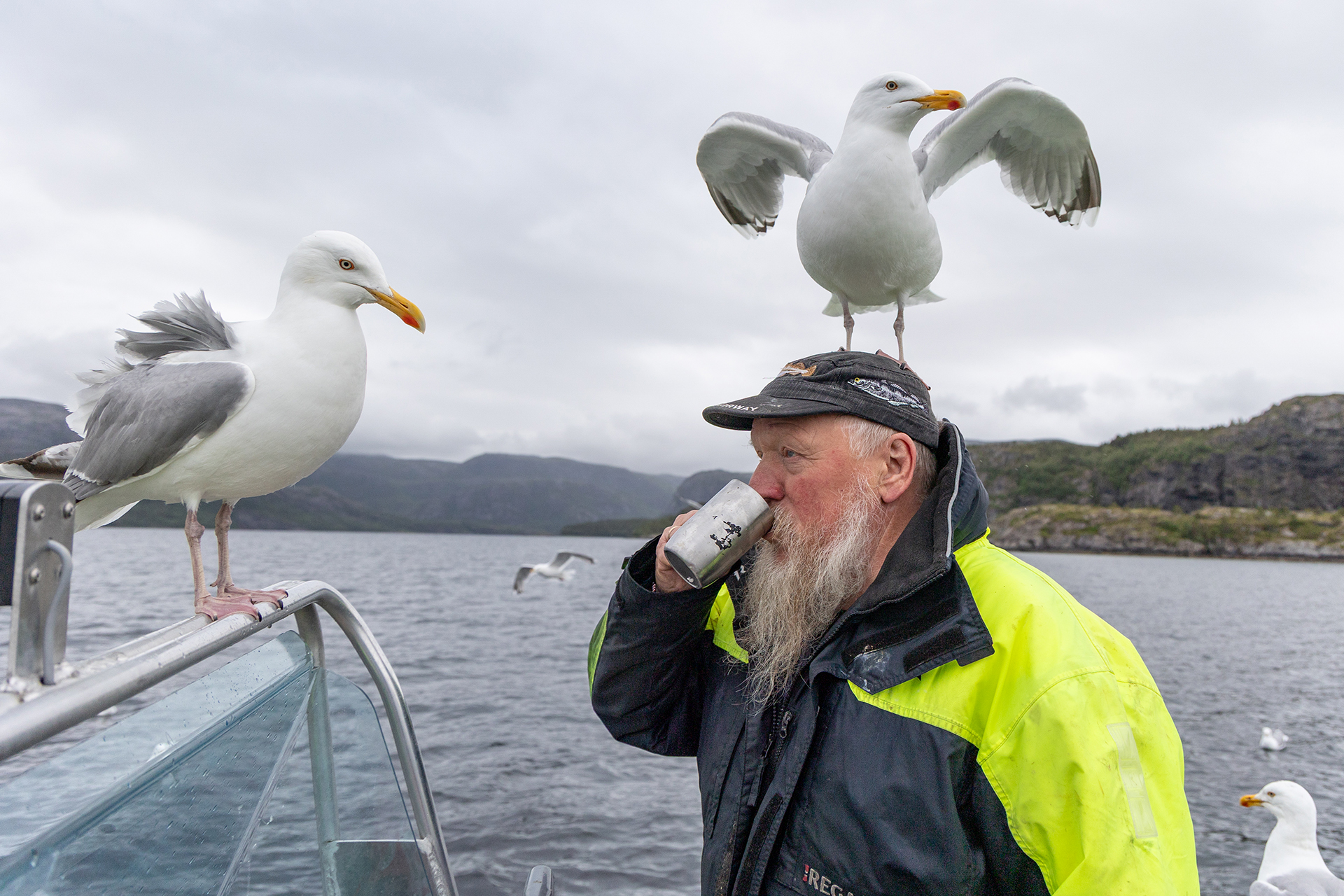
Ole Martin Dahle has spent more than twenty years in the company of white tailed eagles, taking photographers from around the world on his boat into the dramatic seascapes of Northwest Norway. Pictures taken from his vessel have won international awards, and his story has been published in outlets such as the BBC and The New York Times.
How It All Began
Dahle grew up on a farm and as a young man worked as a farmer. The work was hard and not always profitable, so he also worked for the local municipality, first part-time and later full-time. In the late 1990s, Dahle got the chance to help BirdLife researchers check eagle nests. Through them he was asked to assist British bird photographers Peter Cairns and Mark Hamblin, who wanted to capture eagles in snowy landscapes.
“The photographers arrived in January 2000, and I had arranged a photo tent for them and fed the eagles in front of it,” Dahle recalls.
The photo trip lasted a week. On the first day an eagle appeared, but then nothing happened for six days. Strong winds and –18 °C made it almost impossible to stay in the tent. Still, the photographers did not give up. They saw great potential in Flatanger and encouraged Dahle to continue. The next winter he built wooden hides in the area, and Cairns and Hamblin captured dramatic shots of eagles fighting in the snow, which gained international attention.
After that, word about Dahle’s work spread like ripples in water. Gradually he left his municipal job behind, and by 2006 he was working full-time with nature and nature photographers. Today, Flatanger is one of Europe’s best-known wildlife photography destinations for eagle photography.
Individual Wild Animals
The eagles recognize Dahle’s boat and know that food may be nearby. Still, they are not dependent on it. Dahle emphasizes the importance of keeping the eagles wild and not letting them get too used to people. Although he respects and protects the eagles’ wild nature, he has learned to recognize them as individuals. Each has its own personality, and some have been named after Dahle’s clients. Luigi dives for fish the moment he sees one, while Brutus hesitates and plays. A special favorite for Dahle is Miguel, whom he has known for more than twenty years. Some eagles can live up to forty years.
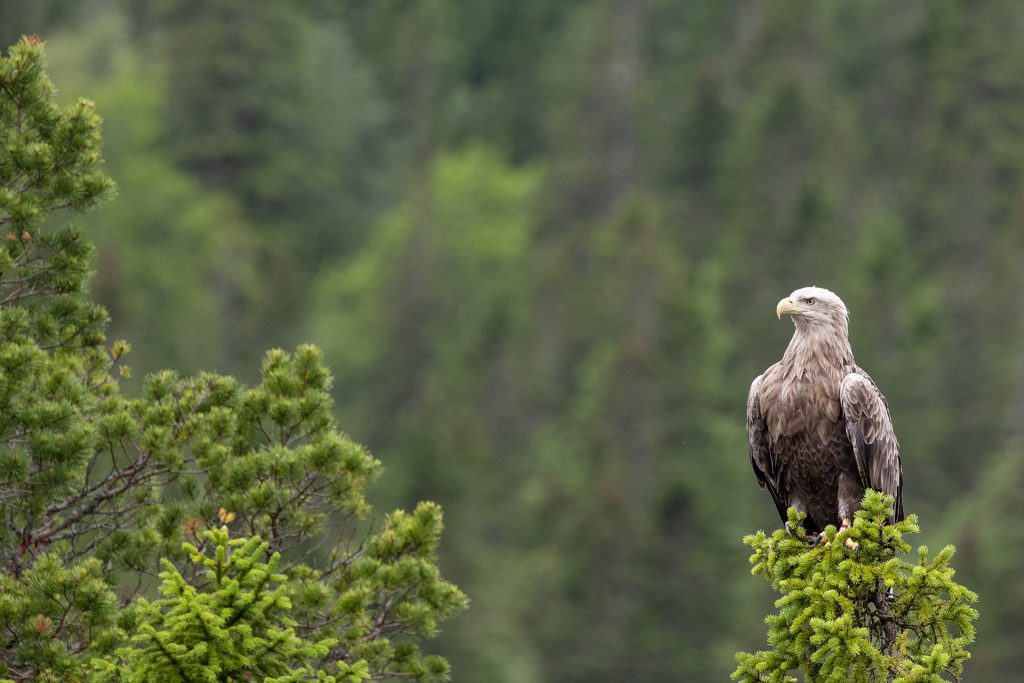
Nature conservation has always been part of Dahle’s work. During his years of activity, the eagle population in Flatanger has grown stronger, and now the local territories are full.
“Eagles need huge areas, and the young birds move on to live elsewhere,” Dahle explains.
In cooperation with BirdLife, he has also taken part in reintroducing sea eagles to Ireland. In Ireland the species was hunted almost to extinction a hundred years ago, but thanks to individuals brought from Norway, the population has recovered. According to Dahle, the project has been very successful.
Dahle’s Photo Tips
Dahle’s work with eagles is also rooted in his own background as a photographer. Today he no longer takes photos himself. When he is at sea with clients, guiding them, observing, and steering the boat takes all his attention – leaving no time for his own photography.
“I am also not enthusiastic about computers, and I don’t want to spend time on photo editing,” Dahle admits. “I haven’t touched a camera in four years.”
Even though the Eagle Man no longer photographs himself, his own experiences have made him a master teacher. According to Dahle, successful eagle photography is not a matter of chance but the result of preparation, technique, and patience. The eagle is a fast bird and the moment is over instantly, which makes it absolutely essential to know your camera.
Weather and Light
Besides the camera, there is much else to consider. At sea, weather is always the biggest challenge. Strong winds can make photography impossible, but the right amount of wind can add drama to the pictures. In suitable winds, an eagle may even dare to fly straight toward the boat, allowing for a rare front-on shot. Calm weather, on the other hand, offers beautiful reflections.
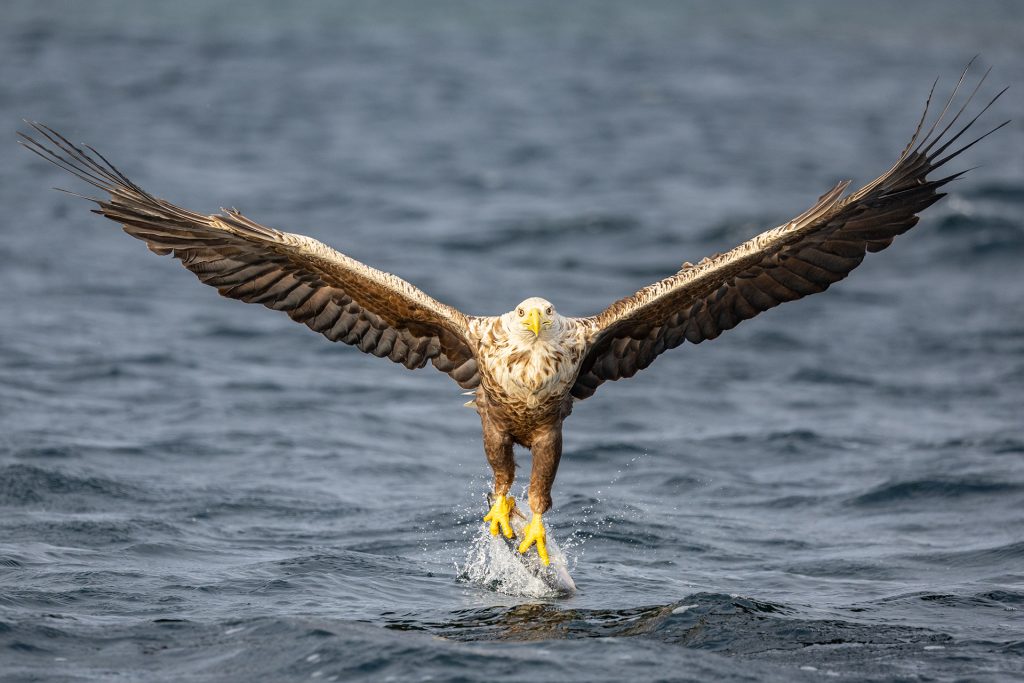
It is also important to understand how the direction of the sun affects the image – where the sun is and when it gives the best light. Against the light, with a slight underexposure, the eagle’s feathers and water droplets can shine like jewels.
“On my boat, however, the photographer never has to worry about wind, sun, or subject position,” Dahle notes. “I always turn the boat so that the eagle is on the boat’s left side, and we agree in advance whether to shoot in front lighting or backlighting.”
Technique and Settings
When photographing eagles, you cannot rely on the camera’s automatic settings. The camera tries to balance the light across the whole frame, which often makes the bird too dark. Exposure should primarily be set for the eagle – not for the sky or clouds. That is why manual settings are essential. Backlighting combined with underexposure can give dramatic results. Long exposures open new possibilities, as do multiple exposures, which can create an artistic impression.
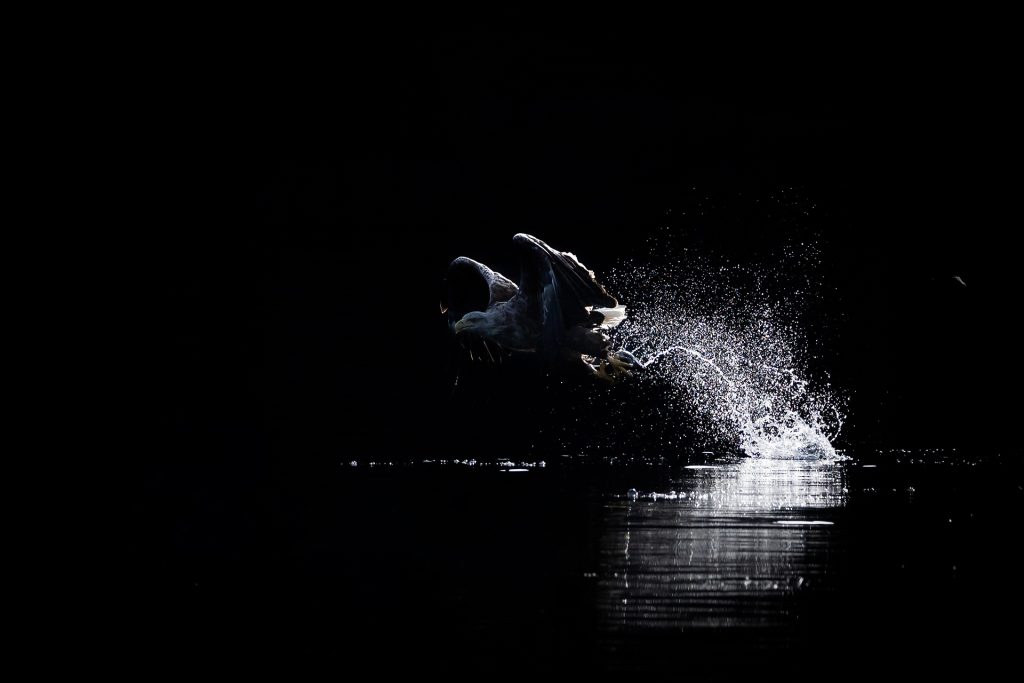
Learning and Attitude
Taking excellent photos requires practice. The gulls that often stay near the boat provide good training: they move a lot, shake off water, and allow testing of different light conditions and settings before the eagles arrive. Spending time with more experienced photographers is also valuable – before, during, and after the shoot. Dahle reminds that the most powerful image does not necessarily come from technical perfection but from the emotion it conveys. He compares photography to music: works by Sibelius or Vivaldi are moving because of their depth and power – not because of technical flawlessness.
Likewise, a photo can be sharp or artistically soft, built on colors or suggested by motion – what matters is that it touches the viewer.
What’s Next?
Born in 1958, Dahle still lives on his childhood farm with his wife Wenche, an award-winning nature photographer. Their two children are already adults, and Dahle’s free time is spent with sheep and dogs, books, and enjoying the nature of their home region. The Eagleman does not like flying, but through his clients who come from all over the world, he still gets to experience stories from other cultures, countries, and continents. The year 2026 will be his last active year as a guide.
“In the future I will take more time for myself and my family, and maybe also pick up the camera again”, he says. “I will still take friends out to sea, just not as often as before.”
Discover more images in Terhi Paavola’s Flatanger Eagles collection.

